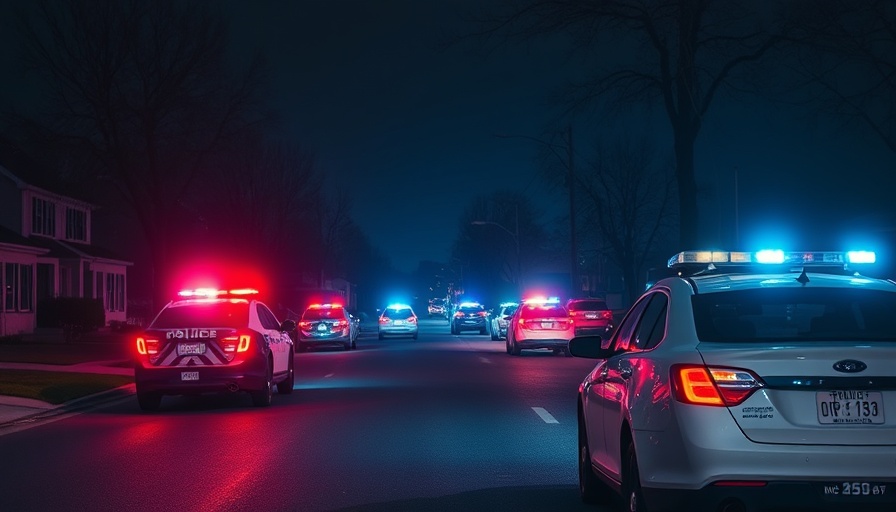
A Disturbing Incident: Homeowner Defends Against Faux Police
In what has been described as a shocking case of mistaken identity and violation of privacy, a homeowner in Houston resorted to deadly force when two men, clad in ski masks and bulletproof vests, attempted to enter his residence while impersonating law enforcement officers. This incident unravels deeper concerns about crime, personal safety, and the ongoing discussions surrounding vigilantism in America.
Understanding the Context of Increased Crime
This tragic situation raises vital questions not only about police impersonation but also about the growing fear and distrust in law enforcement prevalent among the public. With rising crime rates reported in various cities across the U.S., particularly Houston, residents often feel vulnerable in their homes. Feeling that the police may not be able to protect them, some individuals might resort to taking justice into their own hands, leading to potentially fatal misunderstandings.
The Role of Home Security and Personal Defense
With incidents like this coming to light, the importance of home security and personal defense has never been clearer. Homeowners are increasingly exploring ways to protect their property, from installing security systems to utilizing firearms for self-defense. This homeowner's actions, albeit tragic, reflect a desperate need for individuals to feel secure in their own spaces.
Legal Ramifications and the Discussion Around Vigilantism
The legal implications of such events can be far-reaching. When a homeowner takes a life in self-defense, the event is scrutinized under state laws regarding the use of lethal force. In many states, including Texas, the laws allow homeowners to defend their property vigorously. However, this can lead to complex situations where the lines between self-defense and vigilantism become blurred. Vigilantism, where individuals take the law into their own hands, raises ethical dilemmas: how far is too far in the name of self-protection?
The Emotional Toll on Individuals and Communities
Such incidents not only affect the individuals directly involved but can have a ripple effect throughout the community. Neighbors may feel uneasy and engage in discussions about personal safety. Emotional responses can vary from fear to anger, particularly when the justification for such incidents can feel subjective. It challenges the community's faith in preventive measures, calling for increased education on self-defense and interaction with law enforcement.
Engagement with Law Enforcement: Finding Common Ground
This incident further emphasizes the need for stronger community relations with law enforcement. A push for open dialogues between police departments and communities can foster trust. Crime prevention workshops, community policing initiatives, and neighborhood watch programs can provide platforms for building these crucial relationships.
Future Predictions: Hope for Better Safety Measures
As society continues to grapple with the balance between personal safety and proactive law enforcement, we may see advancements in technology that aid in crime prevention. From smarter home security systems that integrate with local police to increased use of body-worn cameras by officers, the future may hold solutions that enhance transparency and accountability.
Conclusion: Moving Forward Together
While the events surrounding this homeowner's drastic measures underscore a significant issue in societal fears and perceptions of safety, it is crucial to reflect on how communities can work together to mitigate such risks. Individual vigilance should not overshadow the importance of community and police collaboration. Together, they can develop strategies that address crime effectively while ensuring that the rights and safety of every individual are preserved.
 Add Element
Add Element  Add Row
Add Row 



Write A Comment